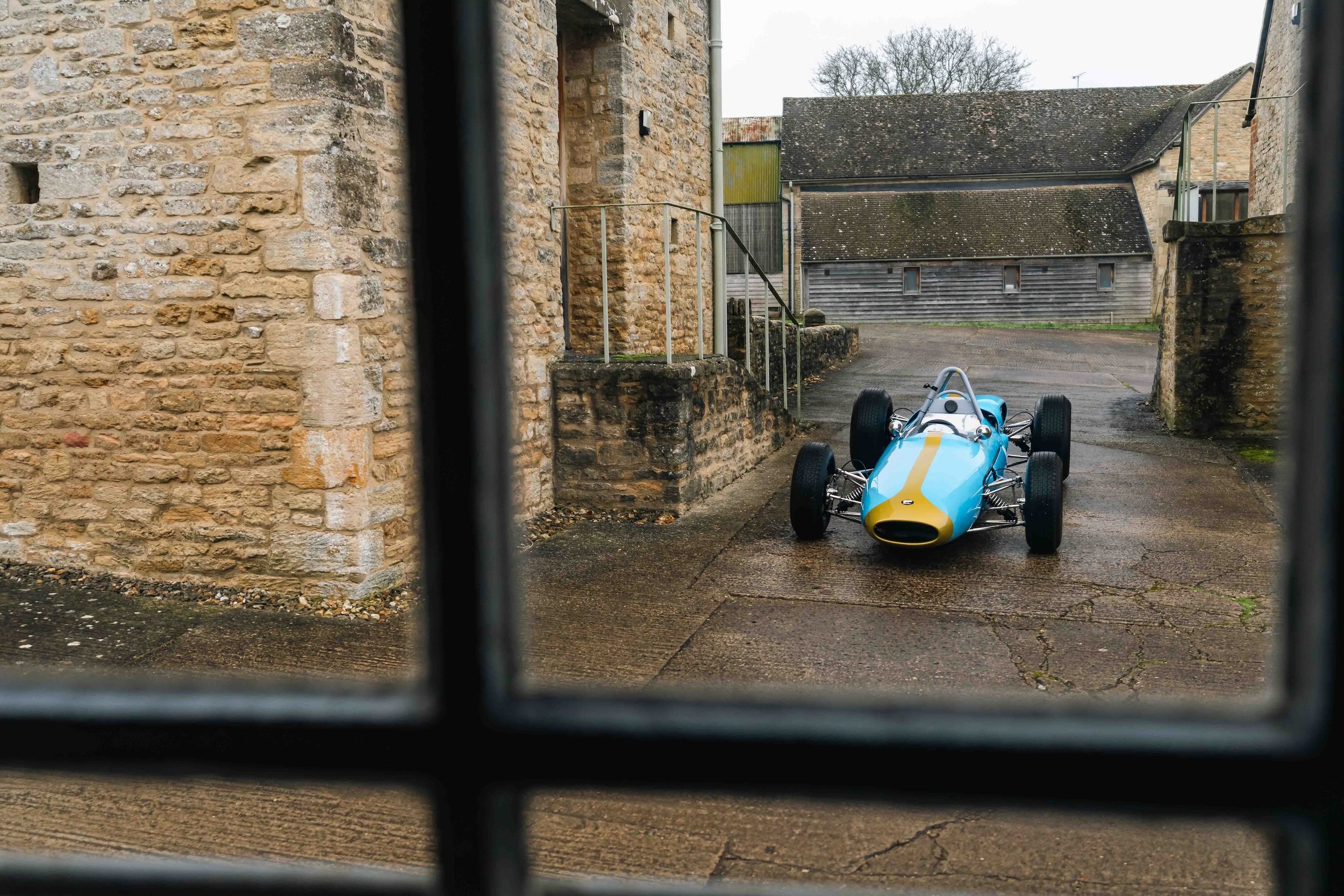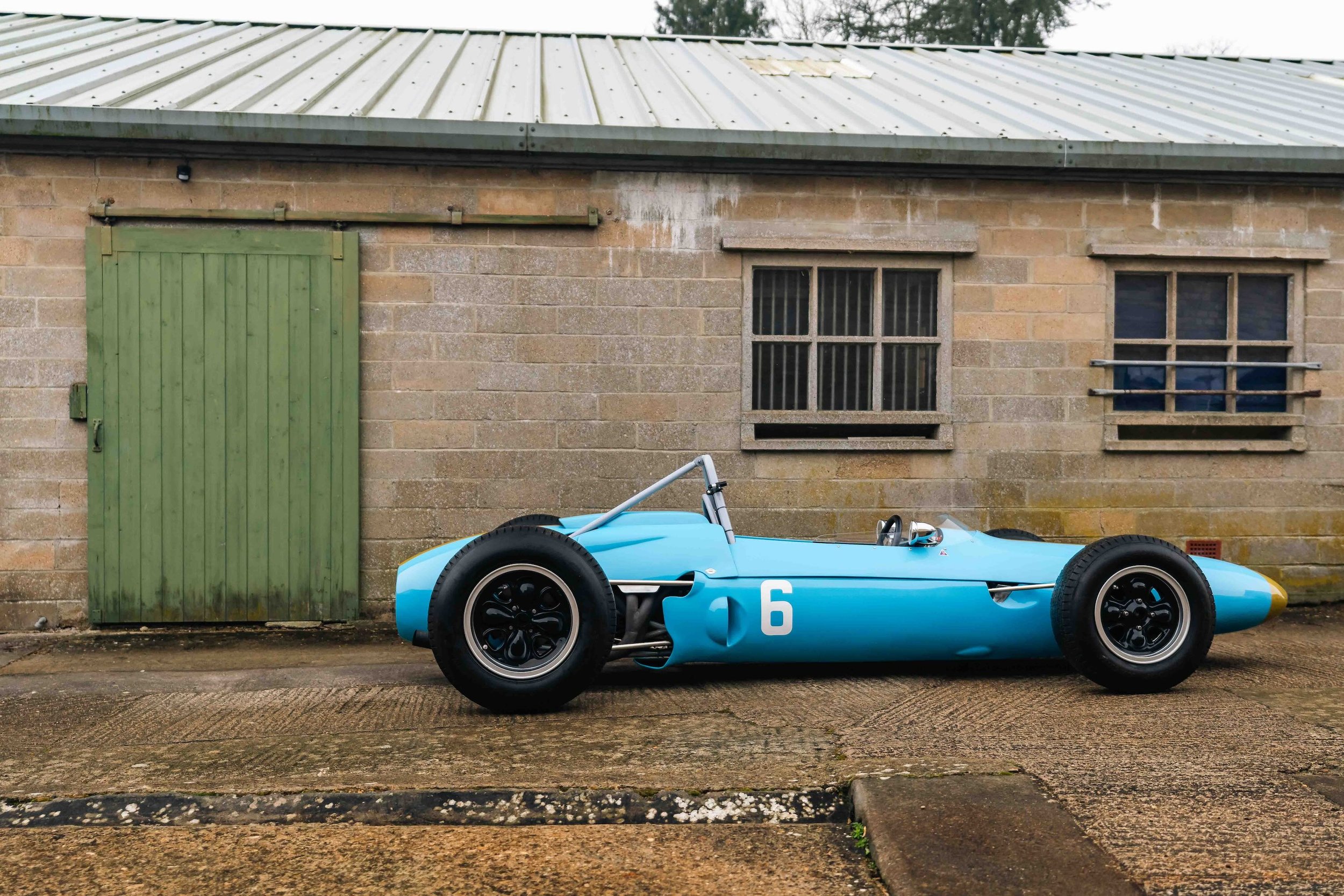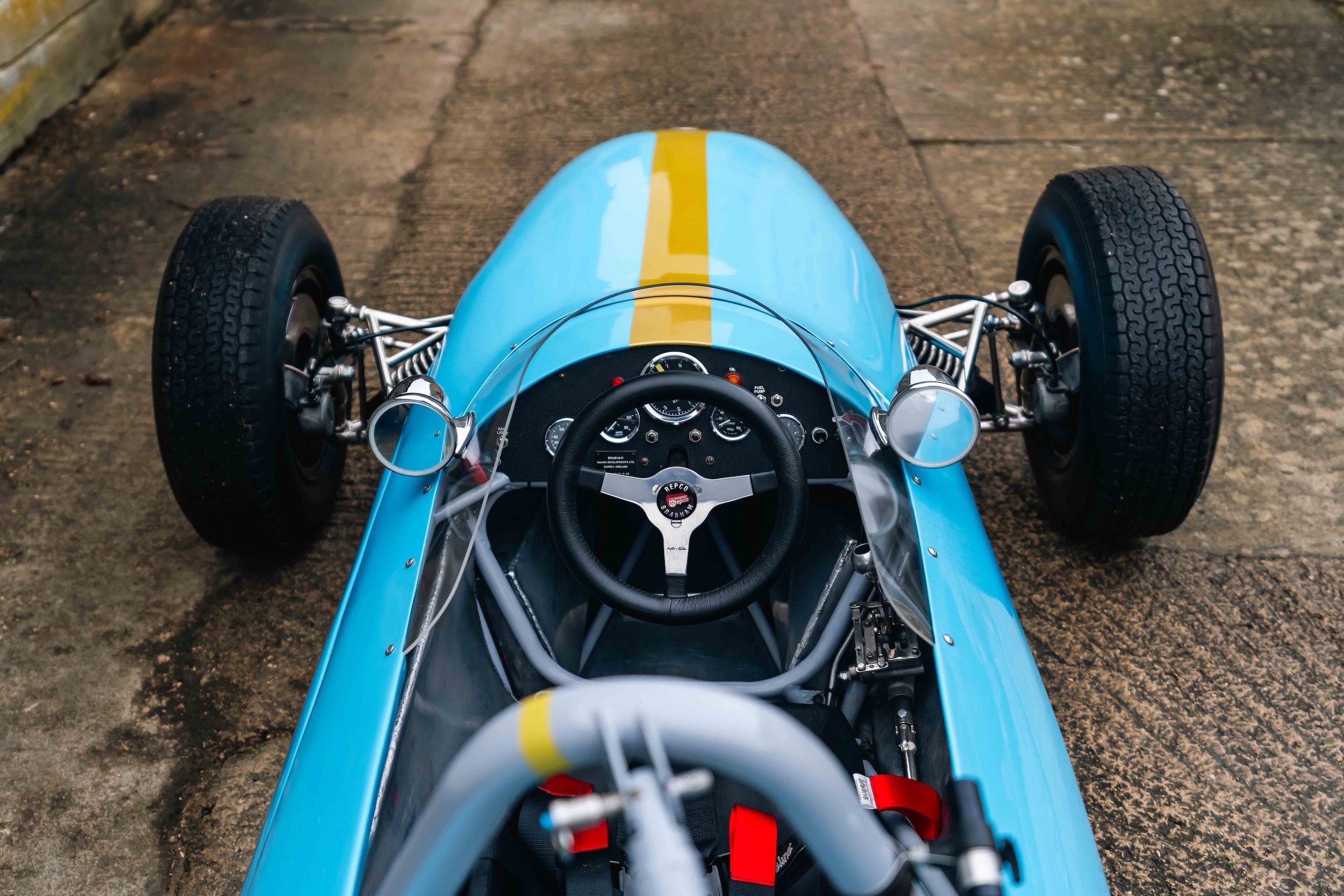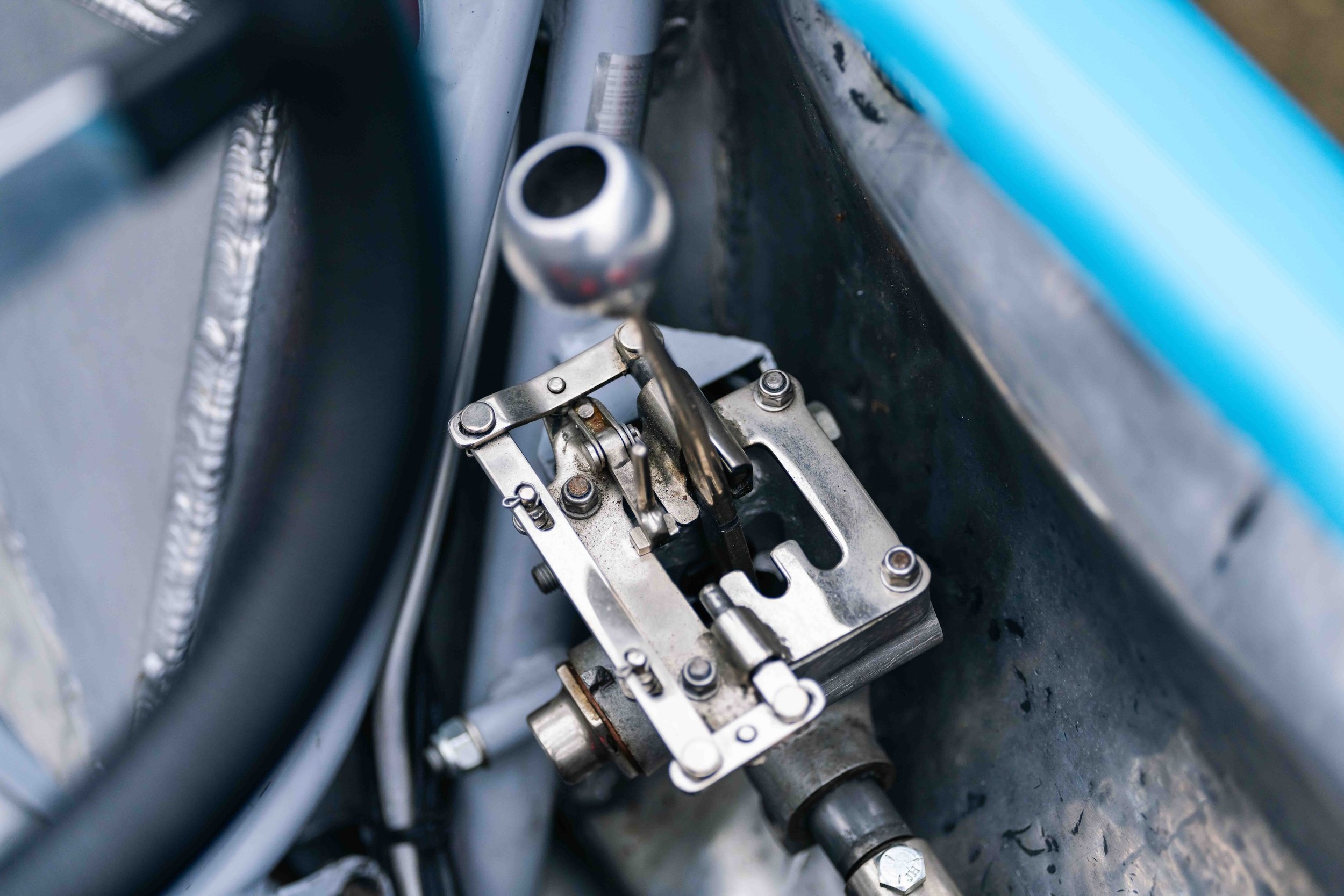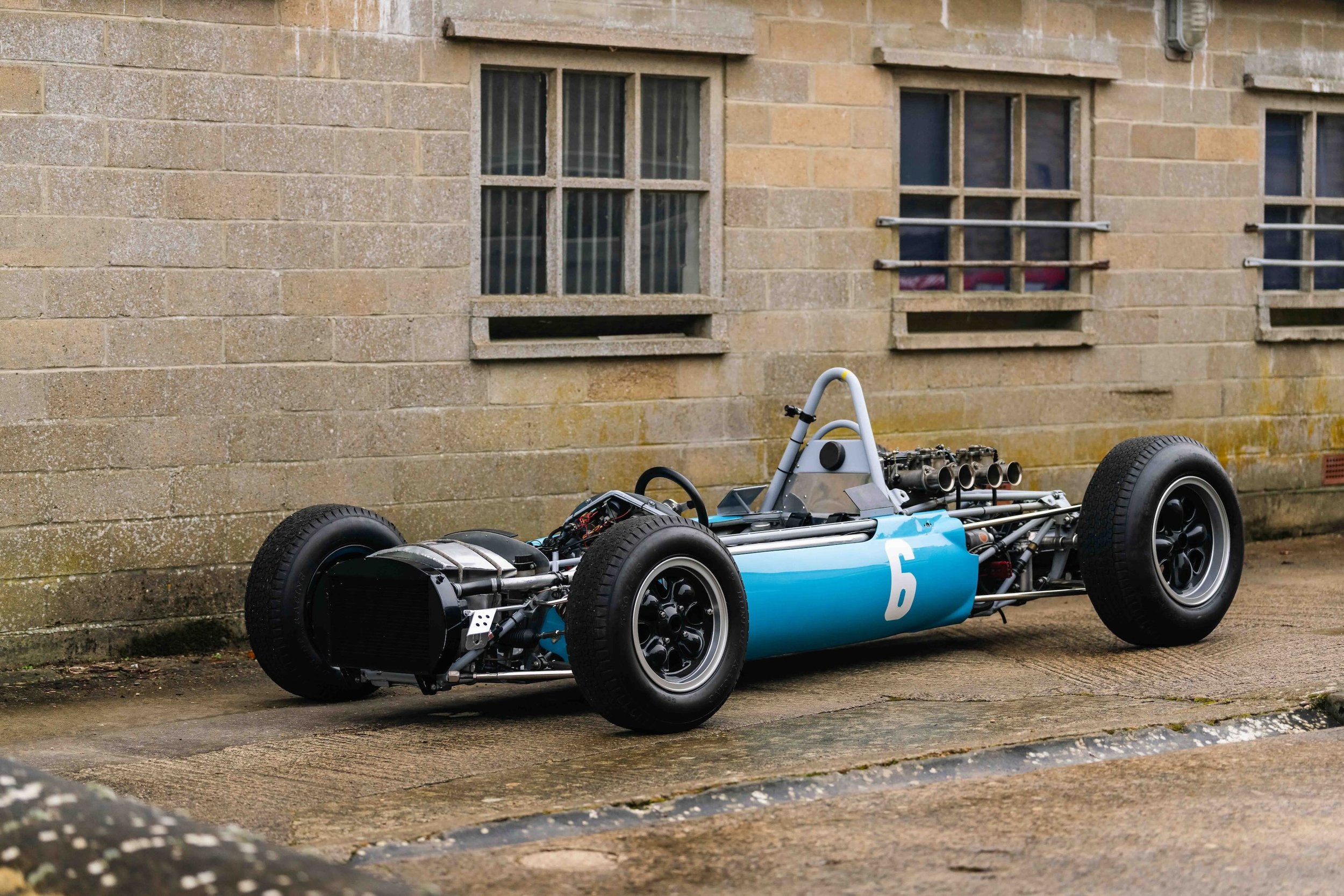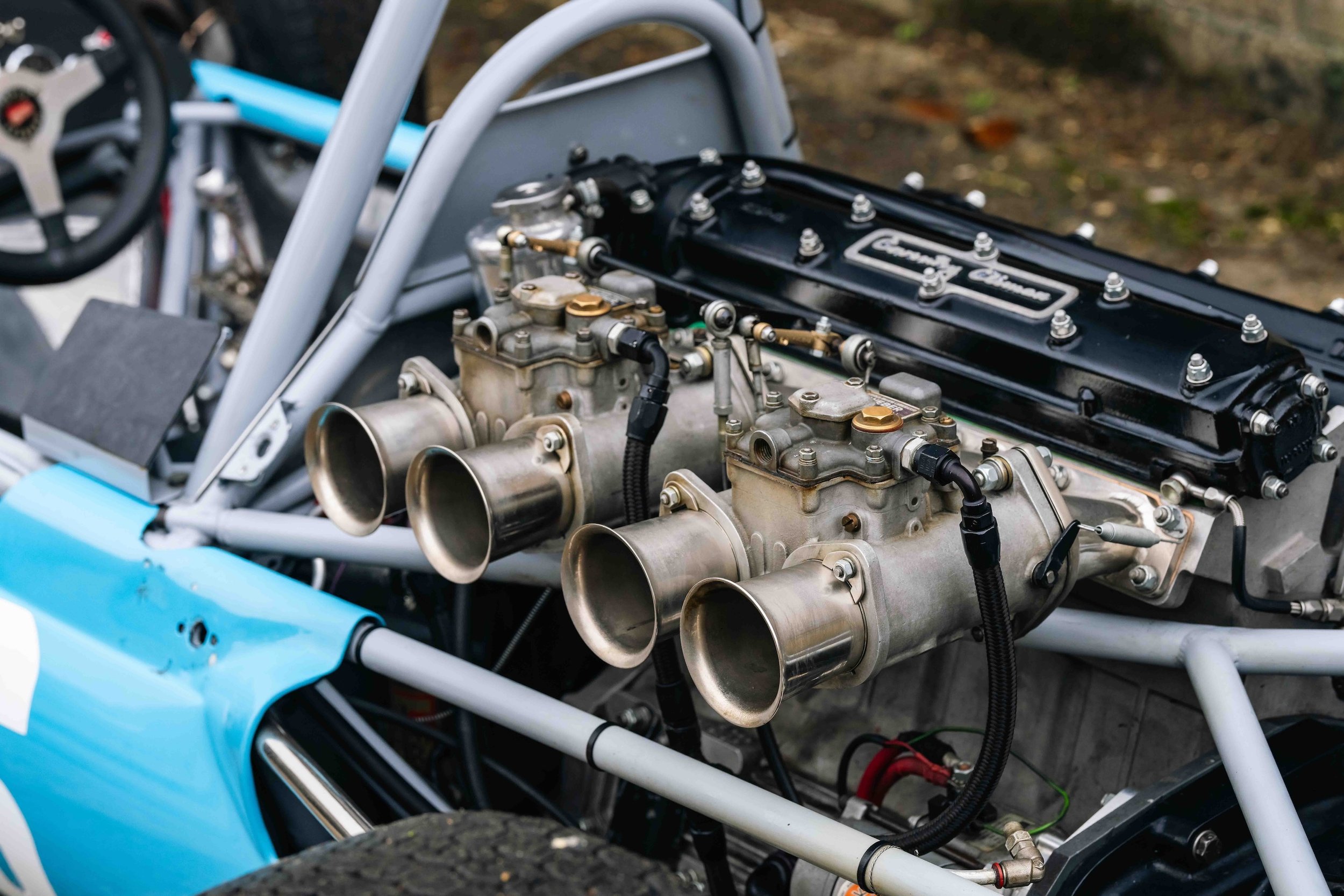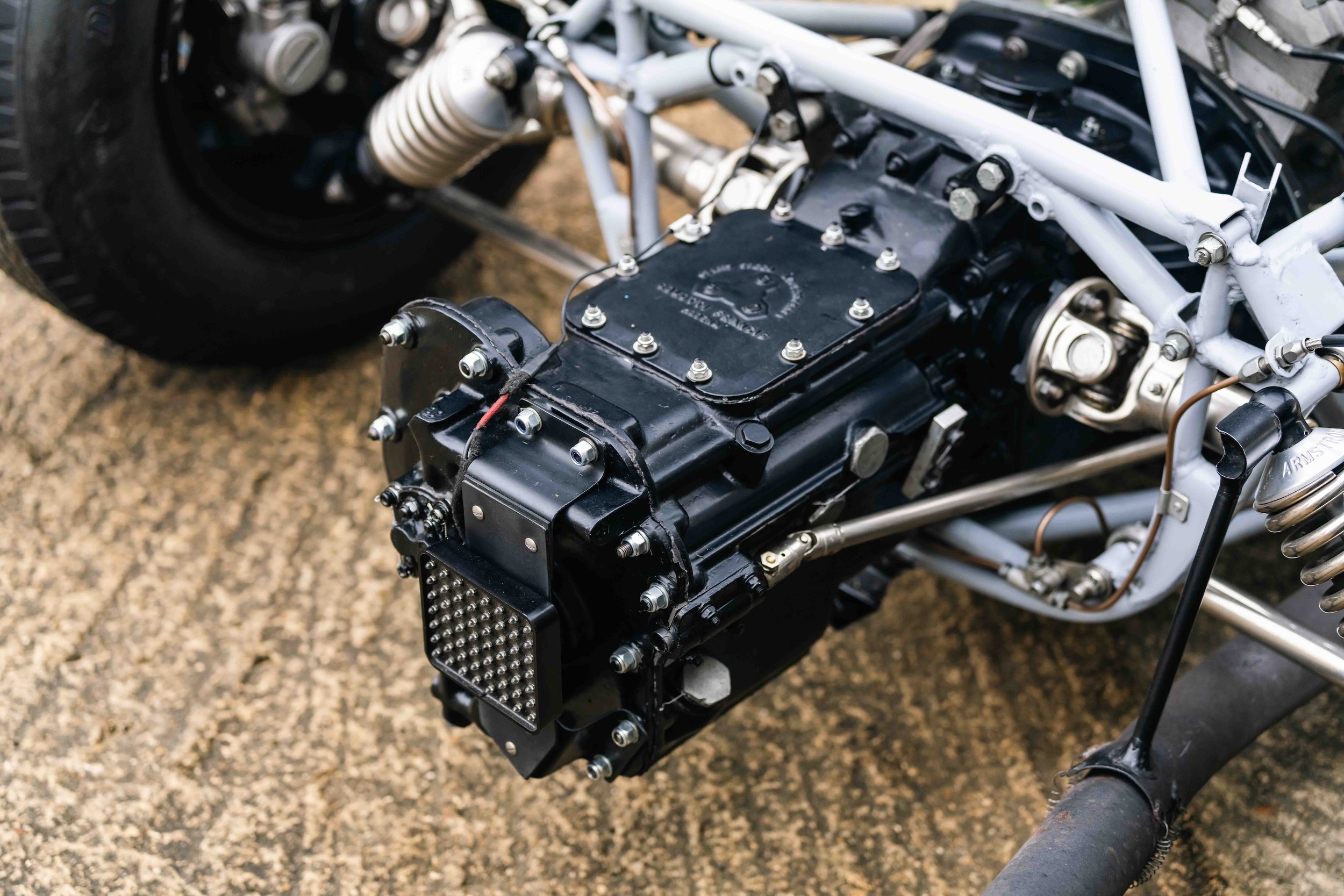Double Australian Gold Star Champion
1962 Brabham BT4 Climax
One of four Brabham BT4s built for the 1962 season and supplied to prominent Australian driver Bib Stillwell in time for the 1963 Gold Star series.
Stillwell won the 1963 Australian Gold Star, the national driver’s championship, with IC-3-62 in 2.7 litre form and again in 1964 with 2.5 litre Coventry Climax FPF power.
Campaigned through the ‘60s in New Zealand before being restored there for historic racing in the late 1980s.
Returned to the UK and raced by the Minshaw family from 2005 to 2018, with numerous outright wins in the HGPCA series.
Restored and maintained by Hawker Racing in the current ownership with truly no expense spared.
Benefitting from a top specification 2.5 litre Coventry Climax FPF and new FIA HTPs, IC-3-62 is the ultimate and fastest car eligible to race with the HGPCA, and one of the best examples of Brabham’s Tasman chassis.
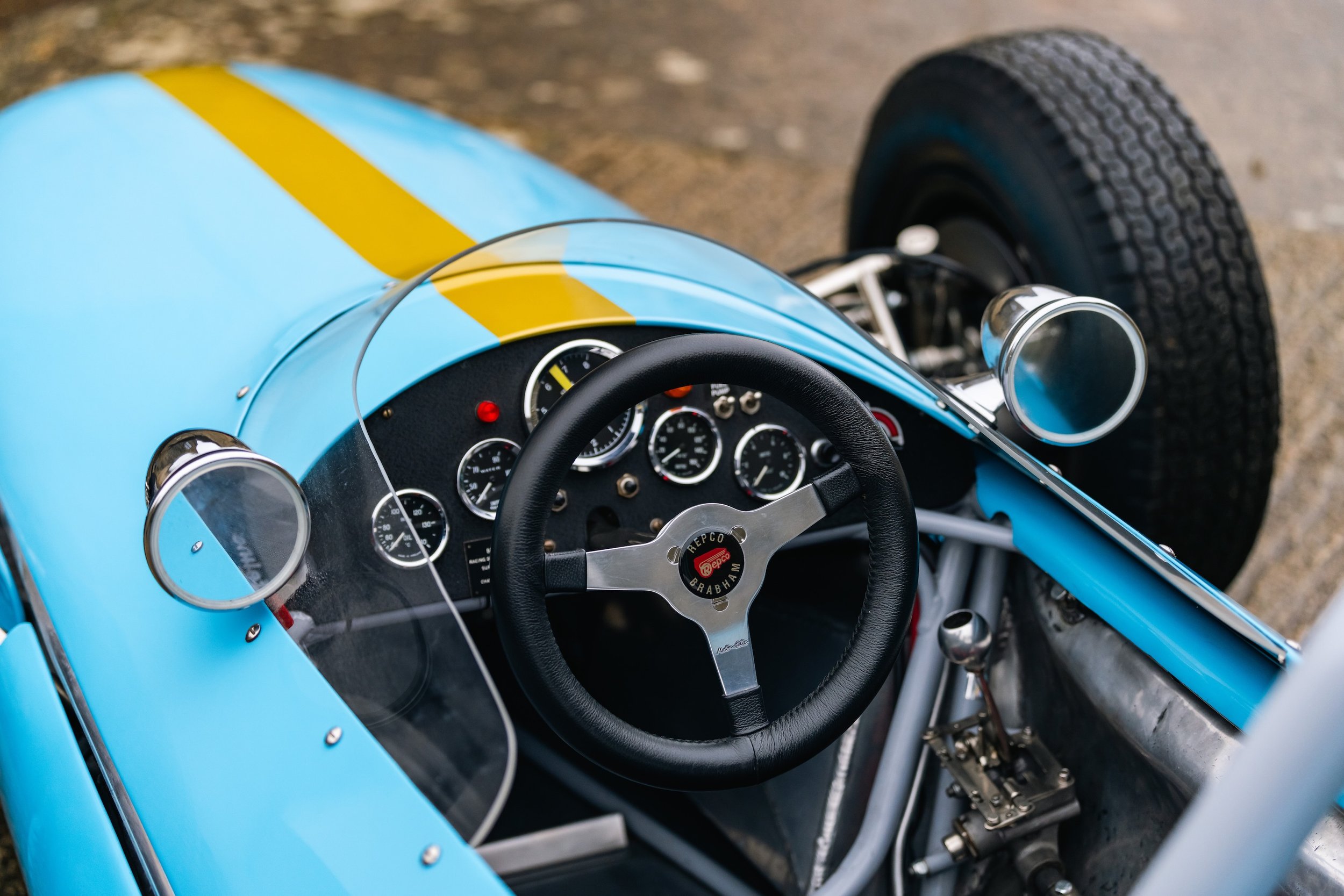
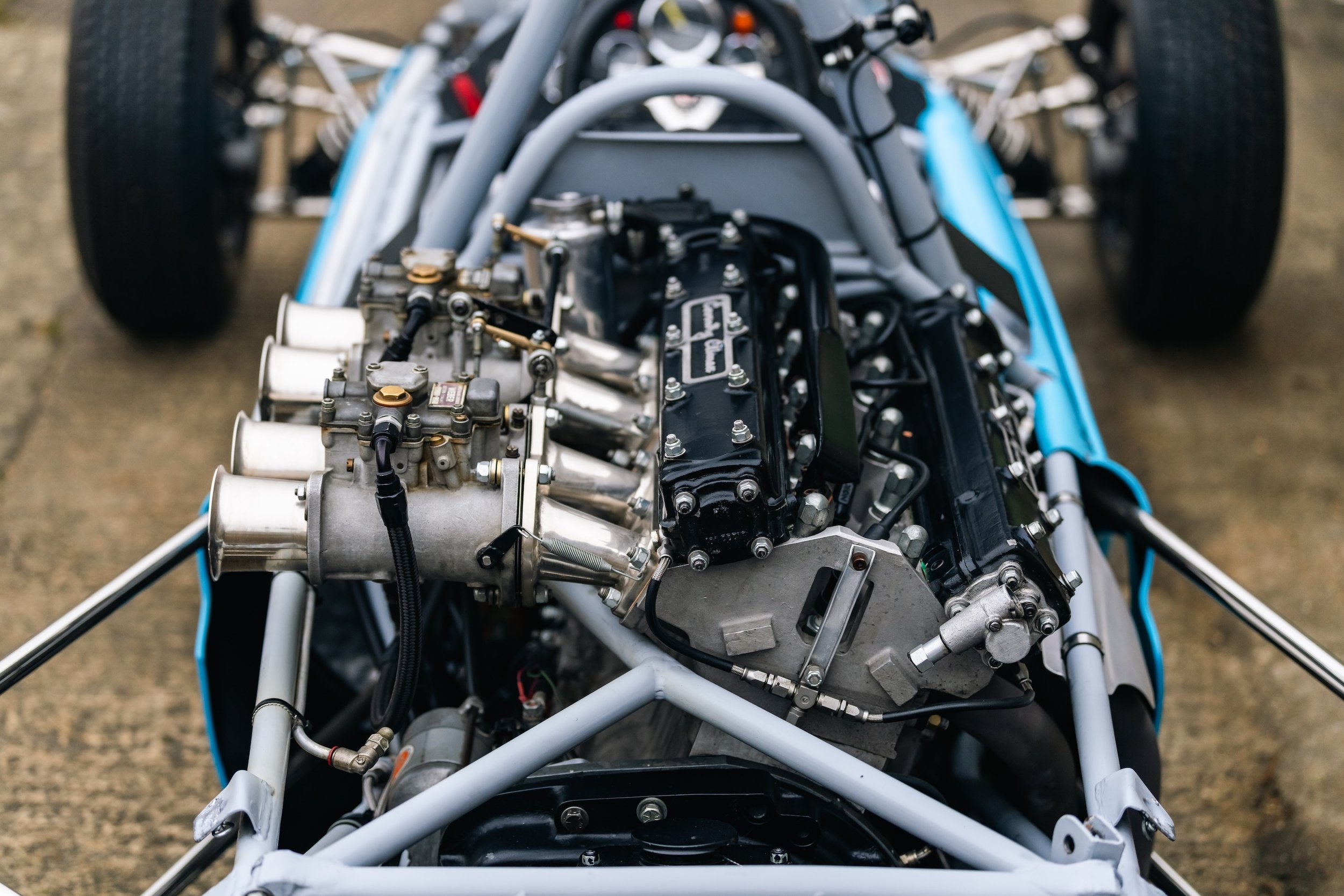
Price: £POA
Chassis Number: IC-3-62
Jack & Ron’s Brabhams
With the complementary talents of double Formula 1 World Champion Jack Brabham and design guru Ron Tauranac at its helm from its foundation in 1960, the fledgling British based but Australian-run Motor Racing Developments concern’s name was in the ascendant as 1961 morphed seamlessly into 1962.
Brabham’s preparation skills - honed since 1956 at the Cooper Car Company, where he fettled his own steeds and often fixed those of team mates - and Tauranac’s sublime knack of creating elegant yet strong cars which were straightforward to build and practical to run, put it on a winning footing.
The success of the friends’ MRD Formula Junior - the frame of which was fabricated by prolific small-capacity sports car builder Bucklers of Reading - in the hands of promising Aussie Gavin Youl spawned a production run of approximately a dozen ‘Brabham Junior’ replicas for 1962. A further 20 or so updated versions joined MRD’s roster for 1963, the 1100cc F1-feeder category’s final frontline season. Only later were these models dubbed BT2 and BT6 respectively, for ease of reference.
Having started the 1962 season in a Lotus 24, “Black Jack’ himself debuted the first F1 Brabham, the BT3, at the German Grand Prix in August, powered by a 1500cc Coventry-Climax FWMV V8 engine. Two months later, a fourth place in the United States GP at Watkins Glen made Brabham the first driver to score World Championship points in a car bearing his own name.
Formula 1 was in its second season under a 1500cc capacity limit, but three BT4 derivatives of the chassis were made towards the end of 1962 for the Australian International races, staged at the end of the F1 programme in the antipodean summer.
These used the ready supply of 2.5-litre four-cylinder Climax FPF engines rendered obsolete by F1’s strangulation, albeit still active in European ‘Inter-Continental Formula’ backwater races. They would keep the Tasman Series theatre in Australia and New Zealand buoyant for years to come. A fourth BT4 was commissioned for European hillclimb competition in 1963.
Jack Brabham and, by then fellow F1 champion Graham Hill (driving for privateer entrant David McKay’s Scuderia Veloce), won Tasman races in the first of the BT4s - chassis IC-1-62 - at Levin (NZ) and Longford (Tasmania) respectively in early 1963.
Brabham also debuted the second, before selling it to compatriot Lex Davison, the shoe magnate and four-time Australian GP winner whose great rival Bib Stilwell had bought the third. All remain in operational condition and the two long based in the UK have won Historic Grand Prix Cars Association races.
This car, IC-3-62
The car Mitchell Curated is proud to present is chassis number IC-3-62, the third of the BT4s built by Brabham for the 1963 Tasman tour. With all three Tasman BT4s being shipped out to Australia, IC-3-62 was supplied new to Bib Stillwell.
The Tasman tour attracted the teams and drivers from Europe to compete around Australia and New Zealand in large capacity single seaters. With Formula 1 having a maximum capacity of 1.5 litres at the time, the cars built for the Tasman races were the fastest of the era.
Finished in the attractive works Brabham colours of turquoise blue with gold nose band and centre stripe, IC-3-62 was delivered in time for the first race of the 1963 series in February. Stillwell, the eminent Melbourne car sales baron who had made his race debut in 1947, went on to use IC-3-62 to win back to back Australian Gold Star Drivers’ Championship titles in 1963 and 1964 as part of the Tasman calendar.
With a 2.7-litre Climax engine acquired from Brabham, during the 1963 season Stillwell took the top point scores at the Lakeside and Longford rounds as the highest placed Australian licence holder. Stillwell took further scores of one 2nd place and two 3rds to close out the championship at the top of the standings.
For 1964, the Tasman Series rules were amended to limit engine capacity to 2.5 litres and Stillwell’s IC-3-62 was adapted to comply through fitment of the slightly smaller 2.5 litre Coventry Climax FPF. Another change for IC-3-62 came in the livery department, with the turquoise and gold being replaced by British Racing Green and yellow.
The 1964 Tasman Series again drew the Formula 1 stars to the southern hemisphere and enjoyed prominence in what was otherwise the off-season. While Brabham brought over new BT7As for the series, Stillwell and Graham Hill showed the continued effectiveness of the year old BT4s. Hill won the final round at Longford and Stillwell took the top Gold Star points score at Lakeside.
Bolstered by a trio of 2nd place point scores in the Australian rounds, Stillwell secured the 1964 Australian Gold Star Driver’s Championship, his second consecutive title with IC-3-62 and his third in total.
Following the conclusion of the 1964 Tasman Series, Stillwell sold IC-3-62 to Bill Thomasen in New Zealand. Thomasen contested the New Zealand races of the 1965 Tasman Series, which formed the New Zealand Gold Star championship, and kept IC-3-62 in the green and yellow livery. Later that year, IC-3-62 was bought by Ecurie Palm Court who ran the BT4 for drivers Ian Green and John Riley in Australia.
IC-3-62 moved back to New Zealand for a race with Robbie Francevic before being sold to Syd Jensen, who leased the BT4 to Jim Boyd for the 1967 International races. In March 1967, IC-3-62 was bought by Bryan Faloon who proceeded to race the BT4 over the following two seasons until he joins the Rorstan team and retired the car from its contemporary service.
IC-3-62 in Historic Racing
Faloon kept hold of IC-3-62 until he passed away and it was sold from his estate to David Manton in 1981. Manton sold IC-3-62 to Richard Hook of Auckland, NZ and Hook restored it before returning the BT4 to the track in historic racing during 1990. In 1991, Ivan Glasby of Sydney, Australia bought IC-3-62 and in 1992 it was bought by John Harper and returned to the UK for the first time since it was built.
Harper proceeded to campaign IC-3-62 in historic racing around Europe with the HGPCA, racing the BT4 in its British Racing Green and yellow livery through to 1998. John Beasley bought the car from Harper and continued its racing ways and refinished the BT4 in the early works turquoise and gold.
Highlights for Beasley included the early editions of the Glover Trophy at the Goodwood Revival, which permitted cars of up to 3 litre capacity at the time, and on one occasion qualified IC-3-62 on the front row alongside a Lotus 49 and BRM P261.
In 2003, Beasley sold IC-3-62 to Demon Tweeks founder Alan Minshaw. Minshaw took to the wheel over many years with the HGPCA, and his son Jason also campaigned the BT4 taking countless victories throughout the family’s ownership.
The Minshaws sold IC-3-62 in 2018, at which point it was bought by the current owner. Since his acquisition, the BT4 has been fully restored and maintained by Hawker Racing. Having been raced only a handful of times in the last six years, IC-3-62’s 2.5 litre Coventry Climax FPF engine remains mid-mileage and produces a huge 80 bhp more than when previously campaigned by Jason Minshaw.
New FIA HTPs have just been granted for IC-3-62 with validity through to December 2035, while the seatbelts are valid to the end of 2028. The Colotti T32 gearbox features an original casing and has been regularly checked during preparation. The BT4 is accompanied by a new crownwheel & pinion and spare cockpit nose section.
Arguably the fastest car eligible for the ever-popular Historic Grand Prix Cars Association’s races around the UK and Europe, the BT4 shows the knack that Brabham had for producing a very well engineered and user-friendly racing car with accessible performance across all conditions.
IC-3-62 sits as one of just four of the model produced and has remained complete throughout its life, bolstered by the remarkable double Australian Gold Star Drivers’ Championship winning pedigree achieved with first owner Bib Stillwell, and now awaits its next custodian.
Get in touch to find out more
Please feel free to get in touch and I’ll be happy to discuss the car with you.
Either fill in the form to the right or call on 0044 (0) 7535 148 470.



